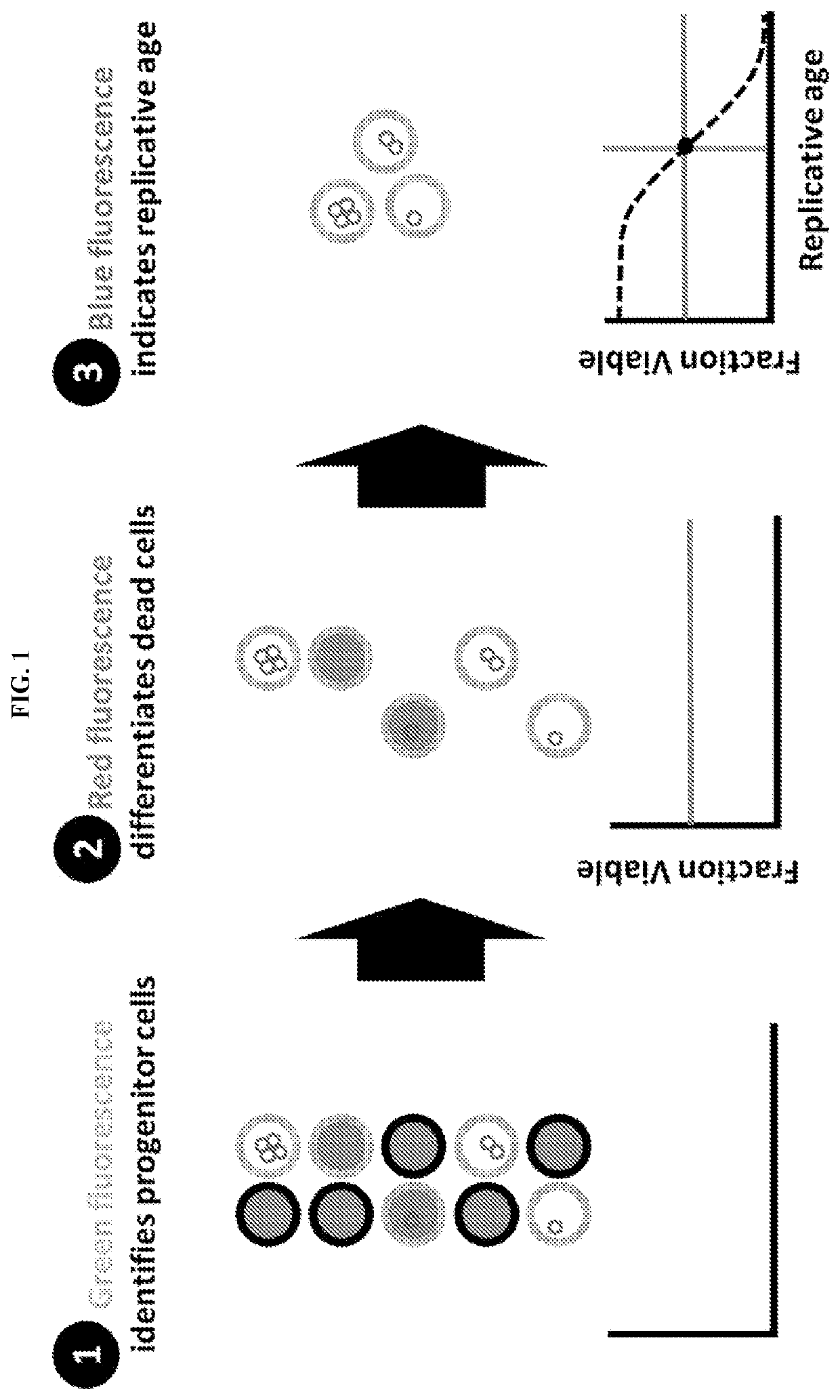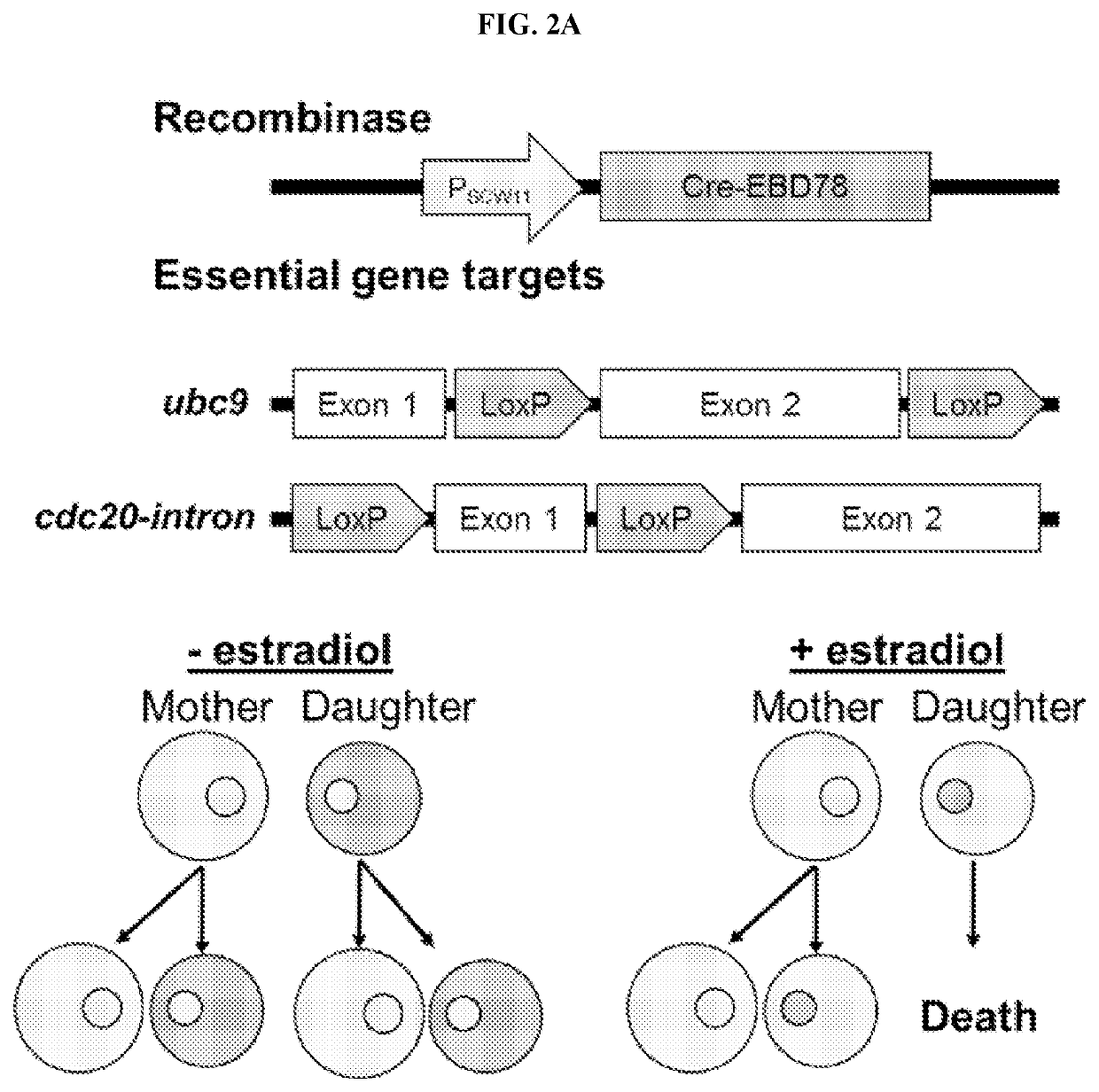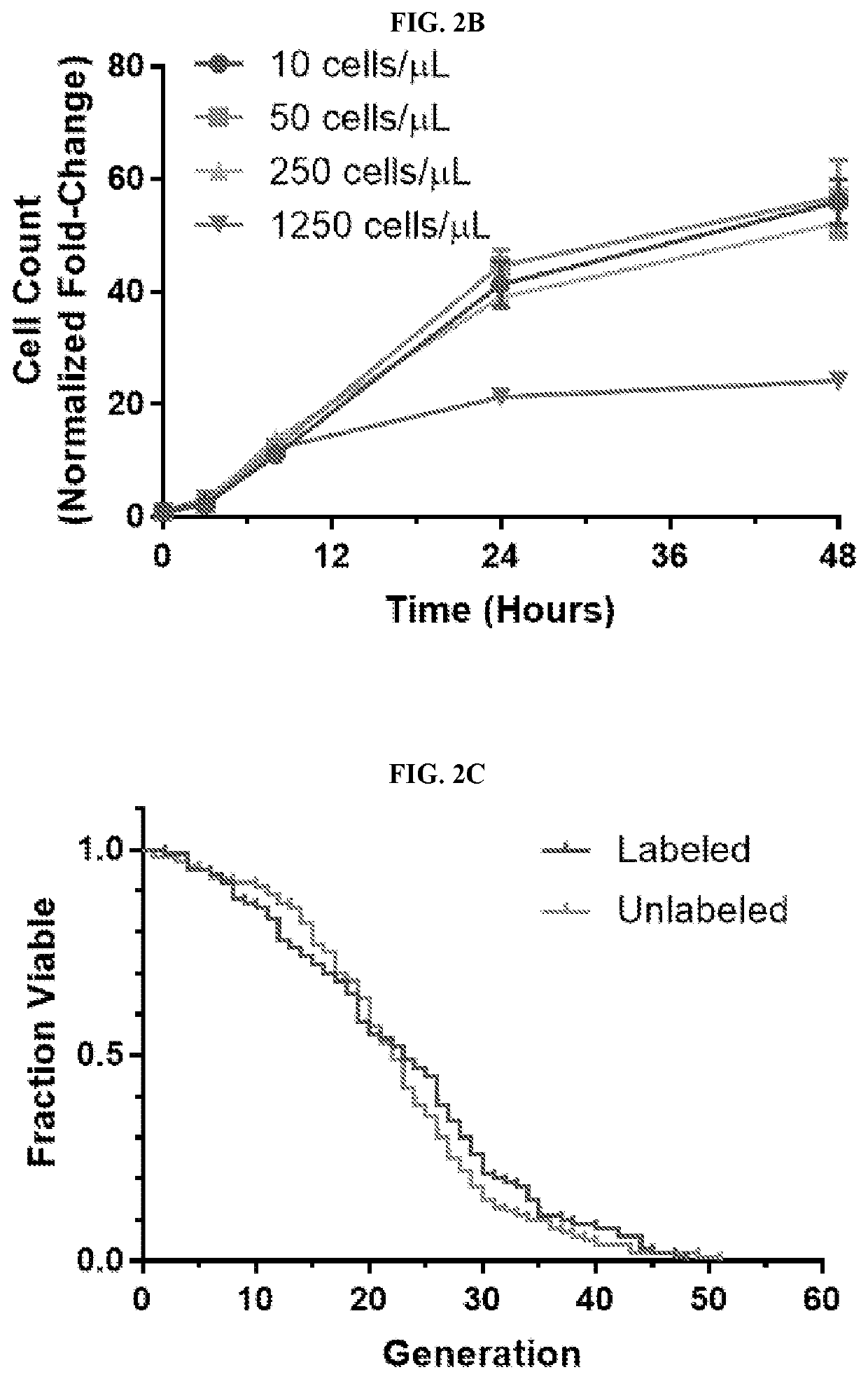Compounds and compositions for extending lifespan of a subject
- Summary
- Abstract
- Description
- Claims
- Application Information
AI Technical Summary
Benefits of technology
Problems solved by technology
Method used
Image
Examples
example 1
ughput Replicative Lifespan Measurement (High-Life)
[0144]In order to test the lifespan of model organisms on both a large-scale and with quick turn-around, a massively multiplexed method was developed to measure replicative lifespan in the short-lived model organisms Saccharomyces cerevisiae. The protocol uses green-fluorescent labeling to identify progenitor cells, red-fluorescent labeling to differentiate non-viable cells, and blue-fluorescent labeling of bud scars to determine replicative age (FIG. 1). Each parameter is measured using a flow cytometer. Using a plate-based autosampler, throughput is >1000 wells per day, each containing a different strain or media condition.
[0145]To achieve high throughput, the measurement system was automated, and the assay was performed in 384-well plates. The assay was performed using an autosampler-equipped flow cytometer, in a volume of 100 μL. Growth of even a single cell and its progeny in such a small volume will result in nutrient starvati...
example 2
f Life Extending Compounds
[0151]High-Life experiments were conducted in the presence and absence of ibuprofen. Cells were labeled, cultured in the presence of β-estradiol and + / − ibuprofen and stained with propidium iodide and CF405M-WGA at multiple later time points. Readings were then acquired with a flow cytometer. An increase in replicative lifespan was observed in the presence of ibuprofen, confirming the ability of the High-Life method to detect lifespan extension (FIGS. 3A-3B). To assess the sensitivity and specificity of High-Life, a trend-line and 95% confidence interval were fit to the untreated condition (FIG. 3B). Using this interval as a cut-off, the fraction of ibuprofen-treated samples that fell within the confidence interval (false-negatives) and fraction of untreated samples that fell outside the confidence interval (false-positives) were measured for each timepoint (FIG. 3C). The rate of false-negatives and false-positives was found to be the lowest for measuremen...
example 3
ation of Lifespan Extending Compounds
[0153]The High-Life method was then tested to determine if it was suitable to screening for compounds that extend replicative lifespan. A diverse library of 2640 compounds was selected, including kinase inhibitors, FDA-approved compounds, and compounds which had failed clinical development. The effect of these compounds on High-Life readings was assayed after 24 hours in culture at 10 μM concentration. As a positive control, ibuprofen was used. Replicates of ibuprofen treatment were reproducibly distinguishable from negative control points (FIG. 4A). To test the analytical specificity of the screen, 99 follow-up compounds were selected which qualitatively deviated from the control (FIG. 4A). The experimenters remained blinded to the identity of these compounds until the original results were repeated: a second 24-hour High-Life measurement was conducted with 3-4 replicate wells for each compound to differentiate random variation from genuine life...
PUM
| Property | Measurement | Unit |
|---|---|---|
| Fraction | aaaaa | aaaaa |
| Fraction | aaaaa | aaaaa |
| Fraction | aaaaa | aaaaa |
Abstract
Description
Claims
Application Information
 Login to View More
Login to View More - R&D
- Intellectual Property
- Life Sciences
- Materials
- Tech Scout
- Unparalleled Data Quality
- Higher Quality Content
- 60% Fewer Hallucinations
Browse by: Latest US Patents, China's latest patents, Technical Efficacy Thesaurus, Application Domain, Technology Topic, Popular Technical Reports.
© 2025 PatSnap. All rights reserved.Legal|Privacy policy|Modern Slavery Act Transparency Statement|Sitemap|About US| Contact US: help@patsnap.com



